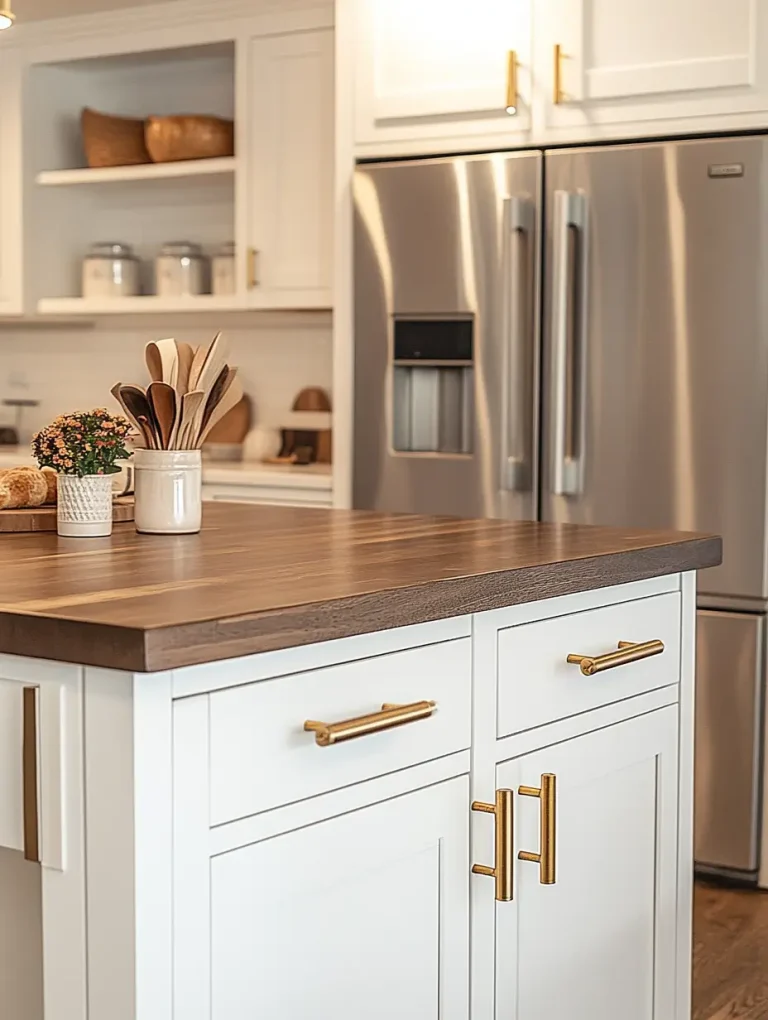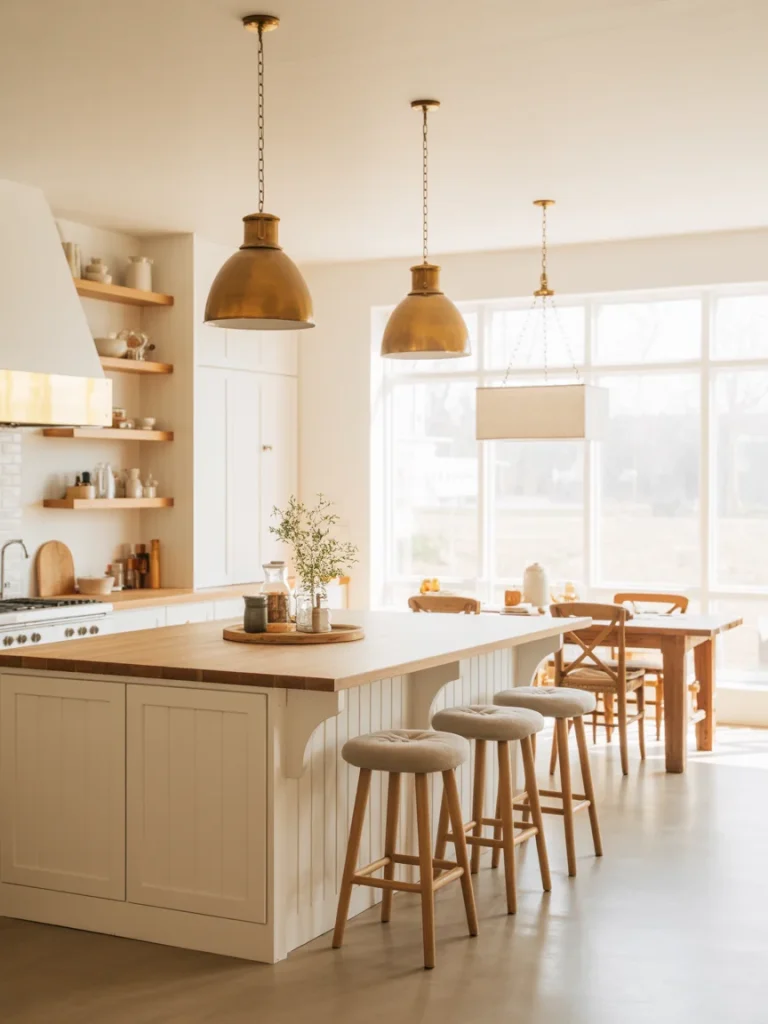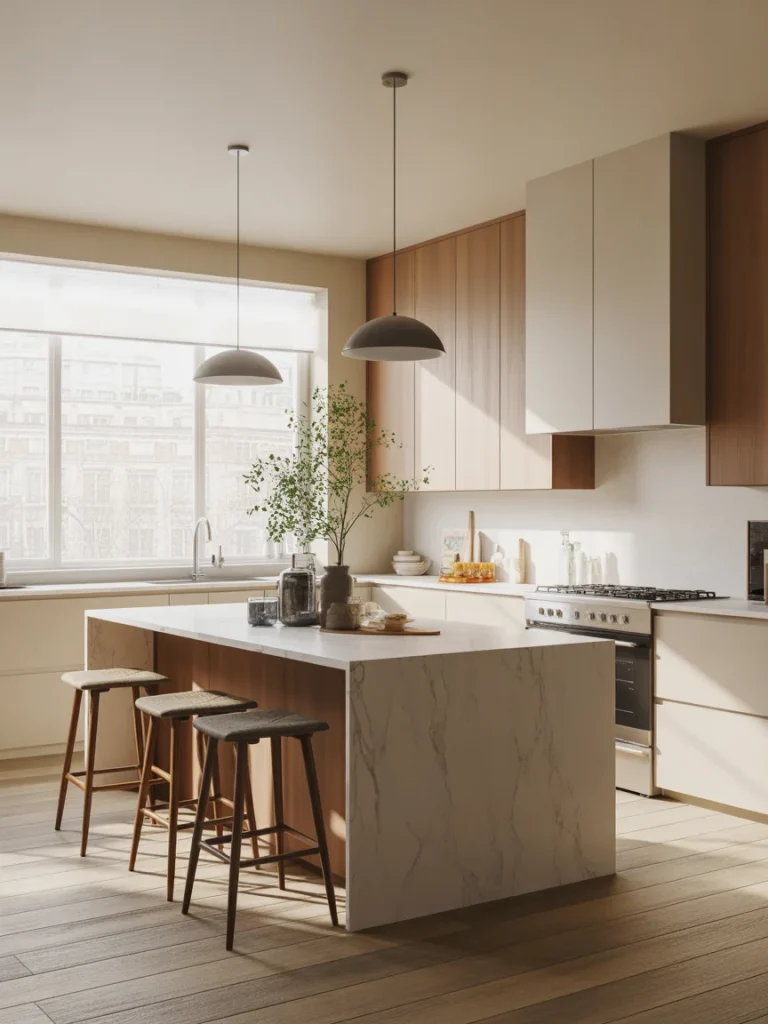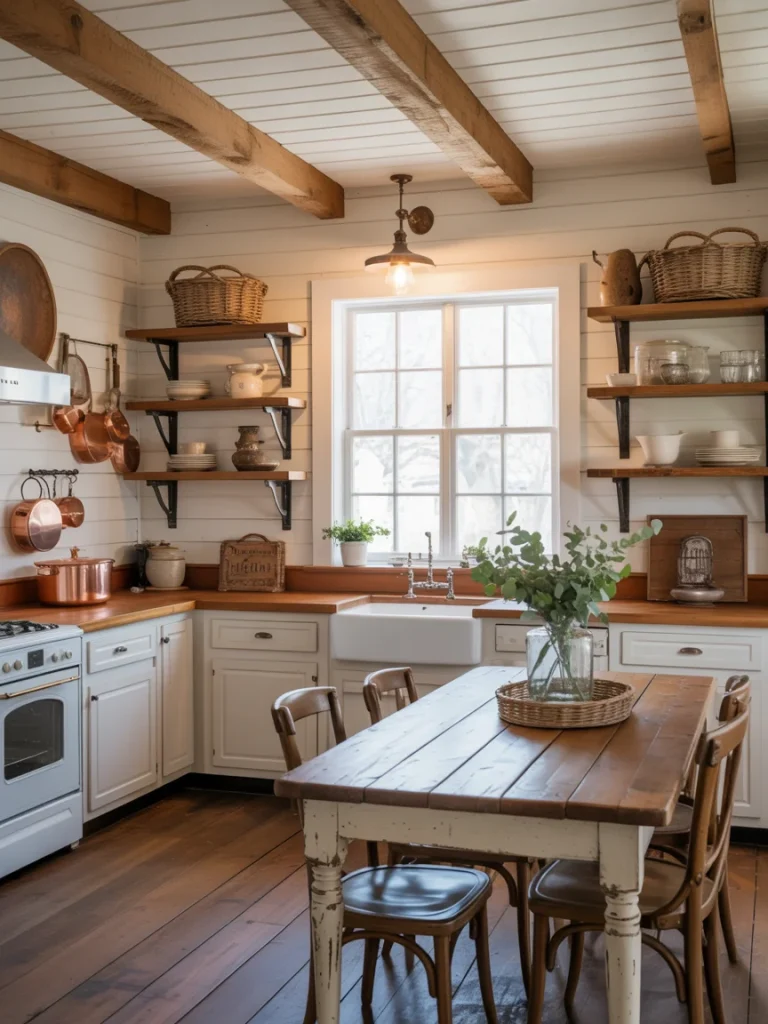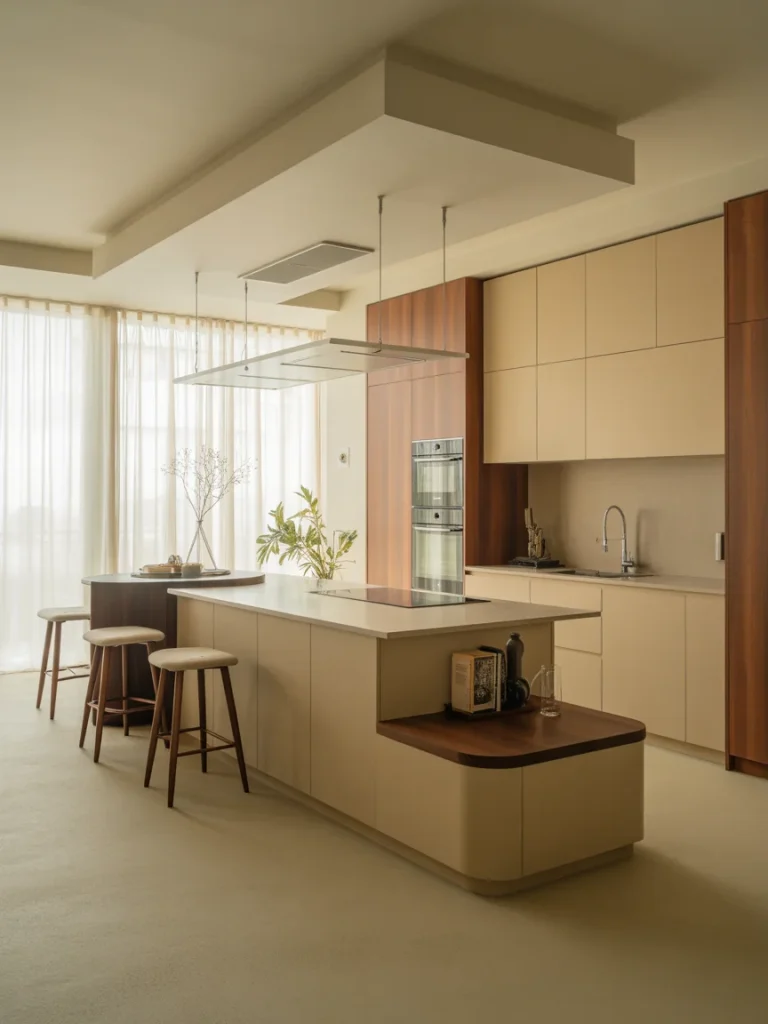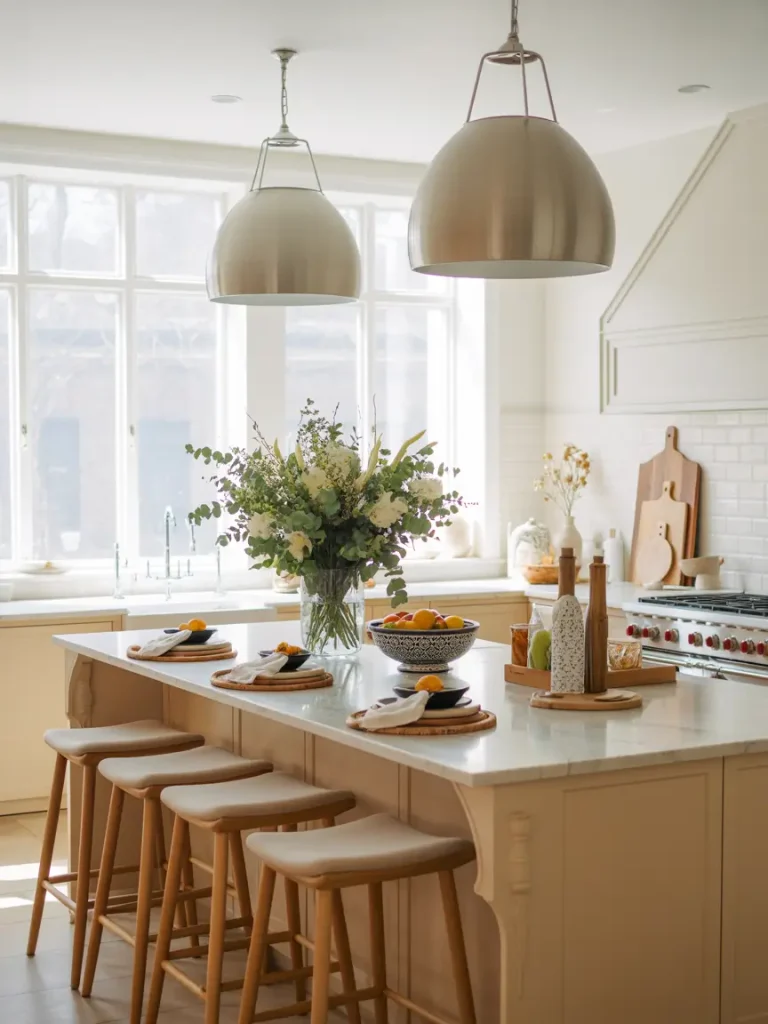The kitchen is often called the heart of the home — a place where warmth, creativity, and connection come together. Today, more homeowners are turning toward earthy kitchen ideas that embrace nature, comfort, and authenticity. Today, more homeowners are turning toward earthy kitchen ideas that embrace nature, comfort, and authenticity, much like the calming balance found in Japandi kitchen design — a style that beautifully merges simplicity and natural warmth. This timeless style moves away from stark minimalism and sterile spaces, instead focusing on organic textures, calming tones, and sustainable materials that bring a sense of life and serenity into the home.
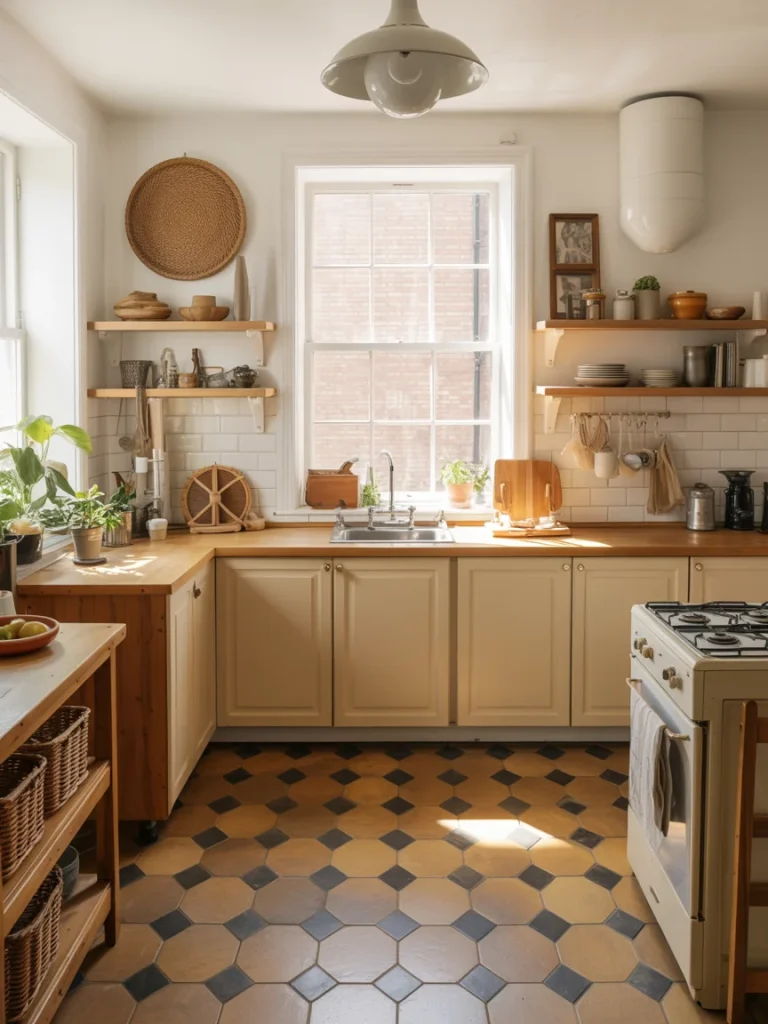
Whether you live in a countryside cottage or a city apartment, introducing earthy elements into your kitchen can instantly transform it into a grounding retreat. In this guide, you’ll discover how to use natural materials, warm color palettes, and handcrafted textures to design a kitchen that’s both functional and soulful — a space where you can feel connected, calm, and inspired every day.
What Defines an Earthy Kitchen
An earthy kitchen is all about balance and authenticity. It’s not just a design style but a philosophy that celebrates craftsmanship, sustainability, and comfort. This aesthetic blends rustic charm with modern simplicity to create a warm, inviting atmosphere. The key lies in natural materials like wood, stone, clay, and rattan that highlight organic beauty and texture. Every detail — from the soft tones on the walls to the patina on a wooden countertop — evokes a sense of grounding and tranquility.
The heart of an earthy kitchen lies in its connection to nature. Nothing feels overly polished or artificial; instead, the materials are chosen for their honesty and warmth. Together, they create a kitchen that feels calm, natural, and lived-in — a space designed not just for cooking but for slowing down and savoring life. This aesthetic blends rustic charm with modern simplicity to create a warm, inviting atmosphere — the same approach that defines earthy living room ideas for a cohesive home design.
1. Earthy Kitchen Color Palettes
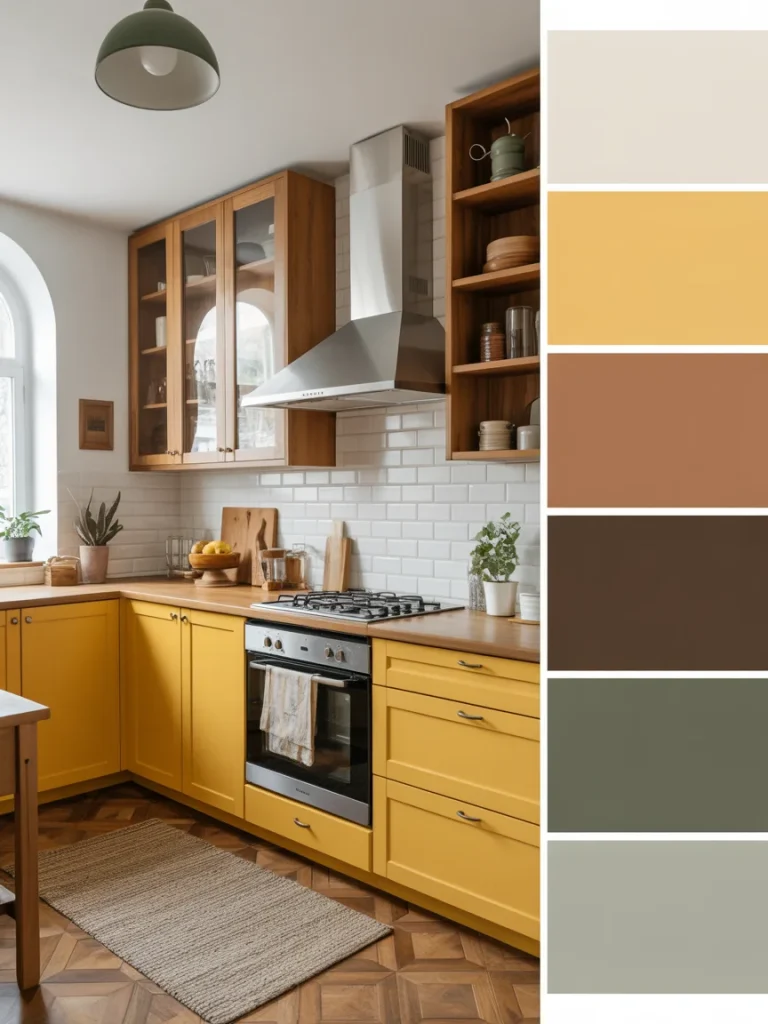
Color plays one of the most powerful roles in creating an earthy aesthetic. Earthy kitchens rely on nature-inspired hues that bring a sense of calm and balance. Soft neutrals such as cream, beige, ivory, and sand serve as the perfect foundation, allowing other tones to layer gently on top. These colors open up the space and reflect natural light beautifully.
To bring depth and warmth, introduce shades of olive green, taupe, terracotta, or clay. These tones mimic the natural world — think forest leaves, sun-baked soil, or weathered stone. You can also experiment with muted blues or sage greens for a touch of freshness without breaking the earthy harmony. The goal is to build a palette that feels organic and timeless, evoking the beauty of nature with every glance.
2. Natural Materials for an Earthy Kitchen
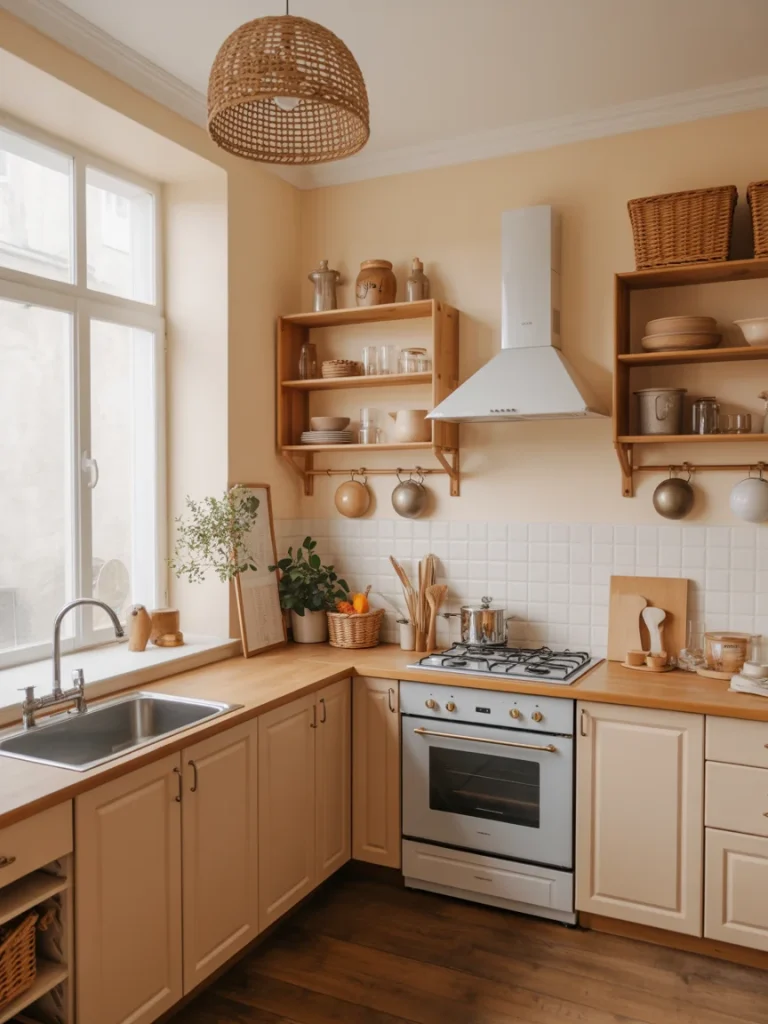
No element defines earthy design more than the use of natural materials. They create a sense of grounding, texture, and authenticity that synthetic alternatives can’t replicate. Wood remains the centerpiece — whether through open shelving, cabinetry, or flooring — and brings instant warmth to the space. Stone countertops or backsplashes add tactile depth, while clay tiles and terracotta details introduce handcrafted charm.
Rattan, wicker, and jute can be woven in through light fixtures, storage baskets, or seating to enhance texture and balance. Every surface should tell a story and feel honest to the touch. Choosing sustainable and reclaimed materials adds not only beauty but also meaning, allowing your kitchen to age gracefully while staying environmentally friendly.
3. Earthy Kitchen Cabinets and Countertops
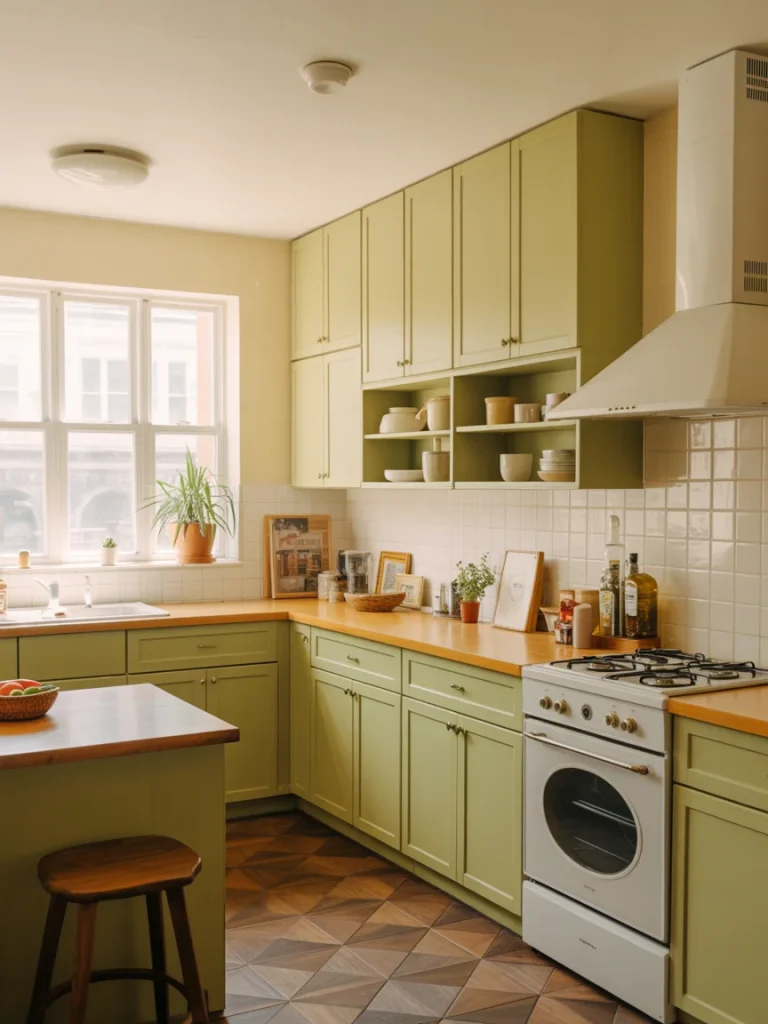
Cabinets and countertops define the tone of the kitchen, and in an earthy design, they anchor the entire space. Choose wood cabinets that showcase visible grain patterns and natural finishes rather than glossy paint. Shaker-style cabinets in mushroom, olive, or soft beige hues blend modern simplicity with rustic authenticity.
For countertops, materials like butcher block, soapstone, or honed granite create a natural elegance that pairs beautifully with warm tones. A mix of light wood cabinetry and darker stone surfaces — or vice versa — adds visual contrast while maintaining harmony. Hardware should be understated, with matte finishes in brass, bronze, or black to complement the organic palette without overpowering it. A mix of light wood cabinetry and darker stone surfaces adds visual contrast while maintaining harmony, similar to the warmth and balance found in white and wood kitchen ideas.
4. Earthy Backsplash and Wall Texture Inspiration
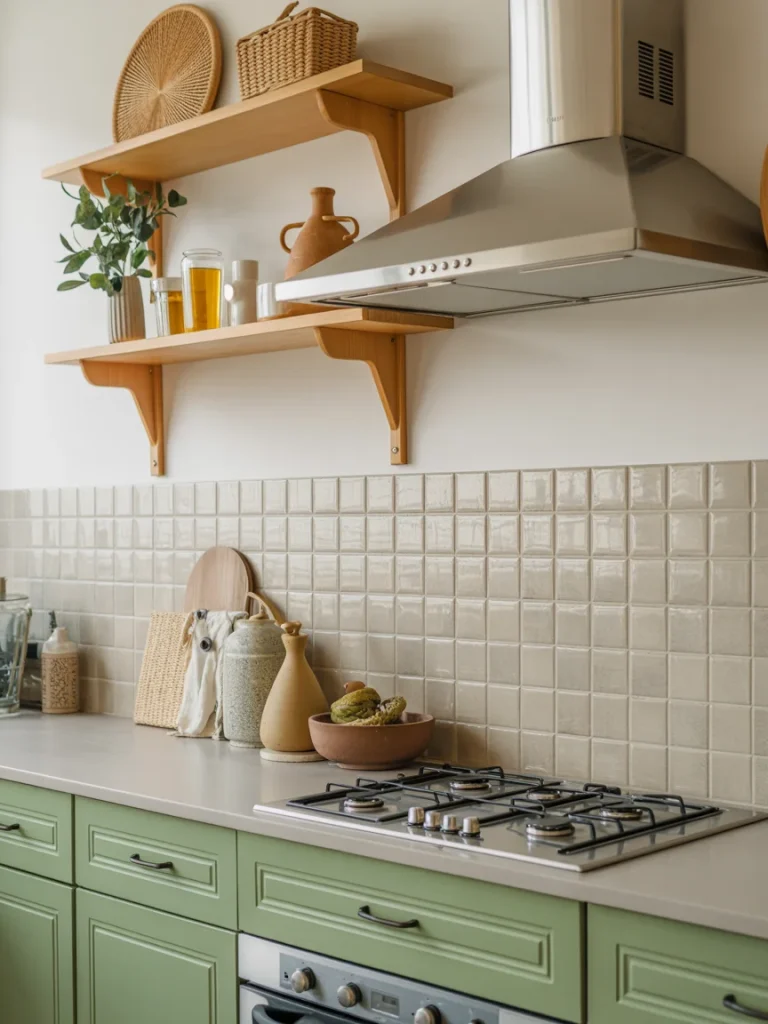
Backsplashes and wall treatments are opportunities to introduce character and depth. Rather than opting for polished tiles, choose materials with natural imperfections. Handmade ceramic tiles, terracotta squares, or limestone slabs bring warmth and authenticity. If you want a subtler texture, limewash or clay plaster finishes provide a beautiful, soft patina that reflects light gently and gives the kitchen an artisanal touch.
The beauty of earthy design lies in its irregularities. A slightly uneven surface, visible brush strokes, or a varied tile pattern adds charm and individuality, reminding us that natural beauty is never perfect — and that’s exactly what makes it timeless.
5. Lighting Ideas for an Earthy Kitchen
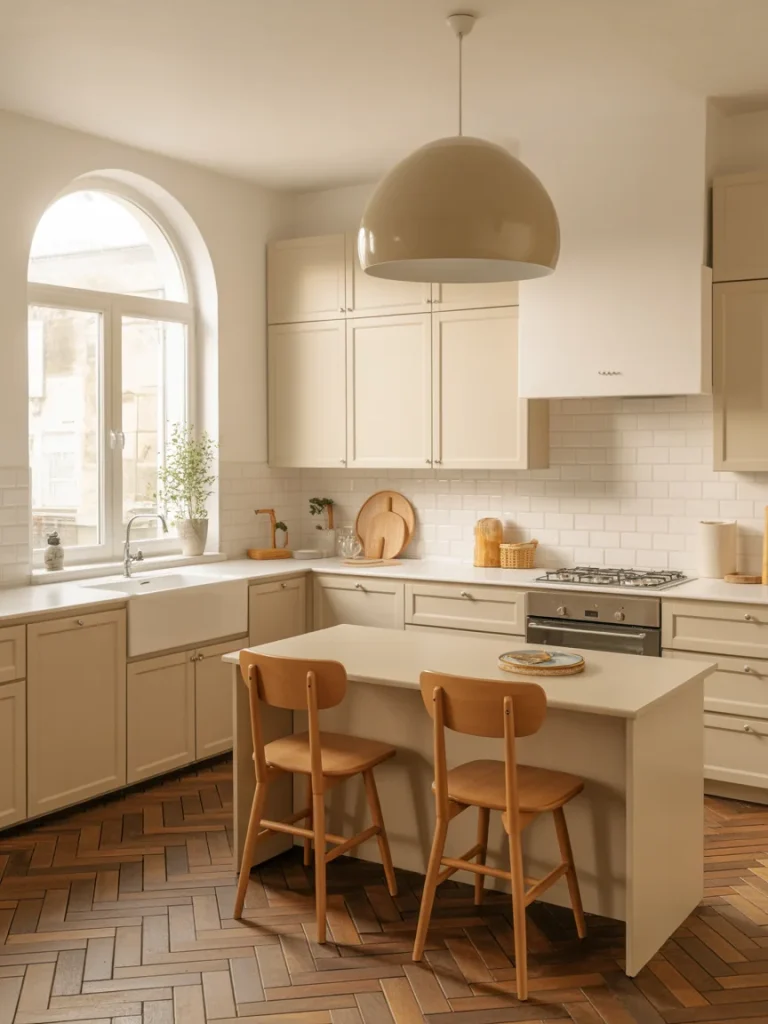
Lighting is essential for bringing warmth and atmosphere to an earthy kitchen. The best approach is to layer your lighting, combining practical and ambient sources. Pendant lights made from rattan, bamboo, or aged brass create focal points while adding organic texture. Wall sconces or ceramic lampshades cast a soft, diffused glow that enhances the warmth of natural materials.
Under-cabinet LEDs provide functional brightness for meal prep, while warm-toned bulbs (around 2700K–3000K) create a cozy, welcoming ambiance. Whenever possible, let in natural light through large windows or skylights — sunlight enhances every hue and texture, turning your kitchen into a vibrant, living space.
6. Textiles and Soft Elements
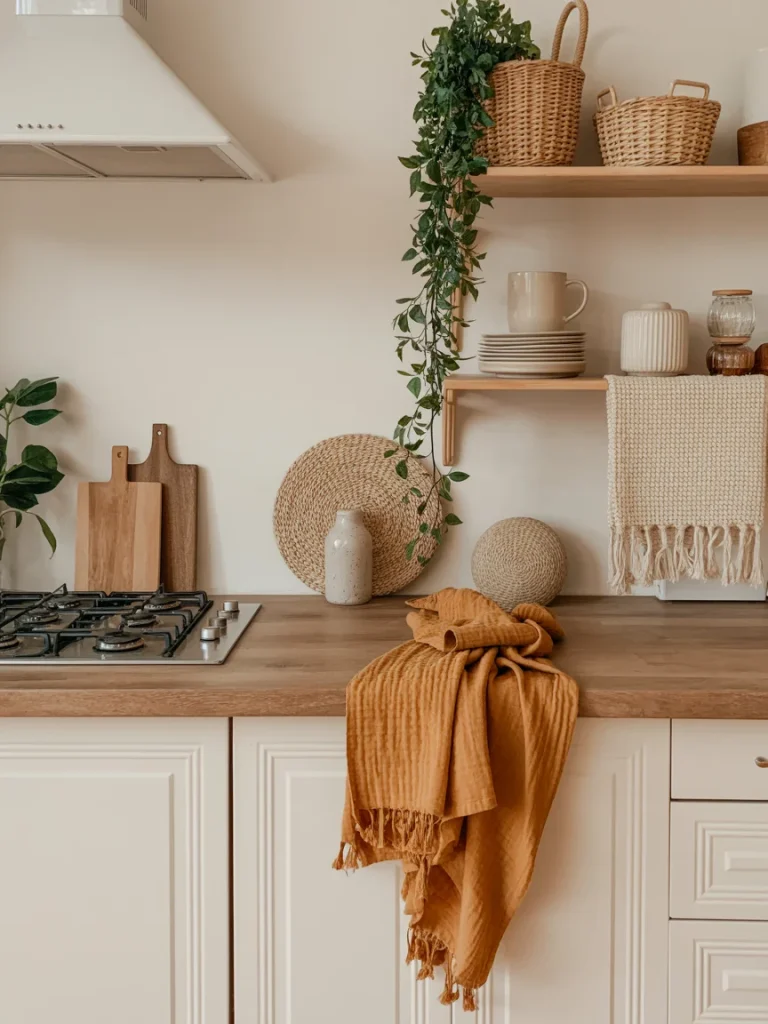
Soft elements bring balance to the hard surfaces typically found in kitchens. Natural fabrics like linen, cotton, or hemp work beautifully for curtains, table runners, and towels. These materials breathe and move gently, introducing a sense of ease and comfort.
Layering textures is key to making the space feel cozy and lived-in. A jute rug underfoot, a striped linen towel draped across the counter, or a softly crinkled tablecloth adds personality and warmth. Each textile contributes to the tactile experience that defines an earthy home — comforting, grounded, and effortlessly beautiful.
7. Incorporating Greenery and Natural Accents
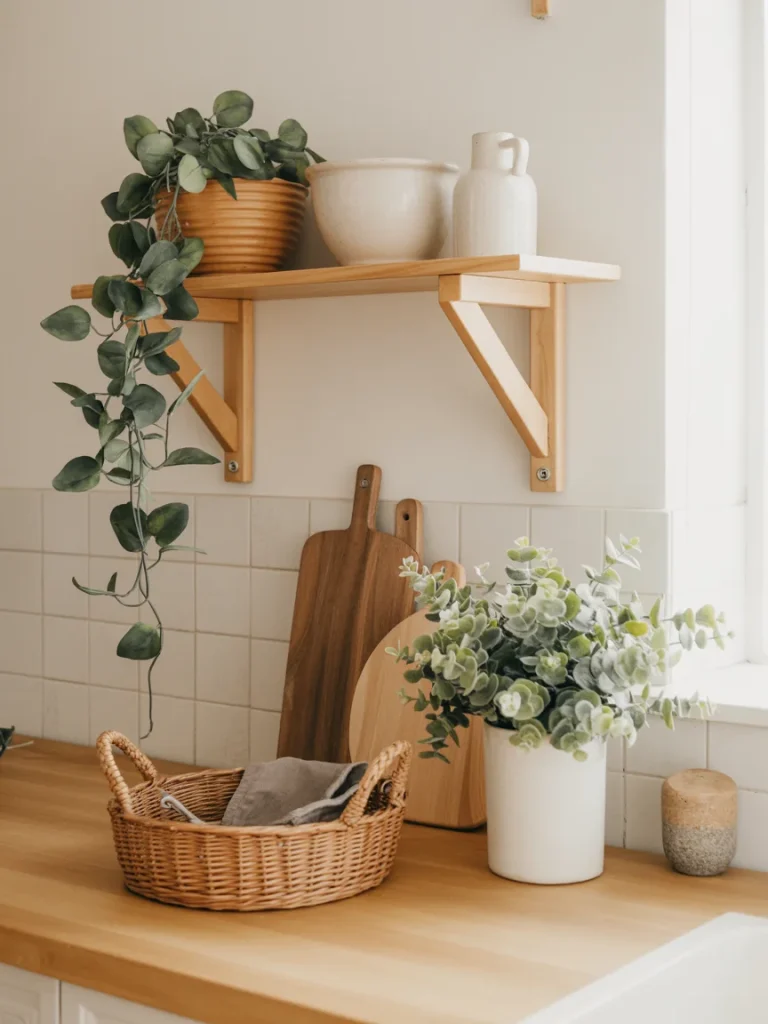
Plants are an essential component of the earthy aesthetic. They not only add life and color but also reinforce the kitchen’s connection to the outdoors. Potted herbs like rosemary, thyme, and basil are both decorative and practical, while trailing vines or leafy greens such as pothos and ferns soften corners and shelves.
Even if you lack natural light, dried flowers or eucalyptus stems in ceramic vases can achieve a similar organic effect. Pair greenery with wood bowls, clay pots, and woven baskets to create a layered, nature-inspired look that feels harmonious and alive.
8. Earthy Kitchen Decor and Accessories
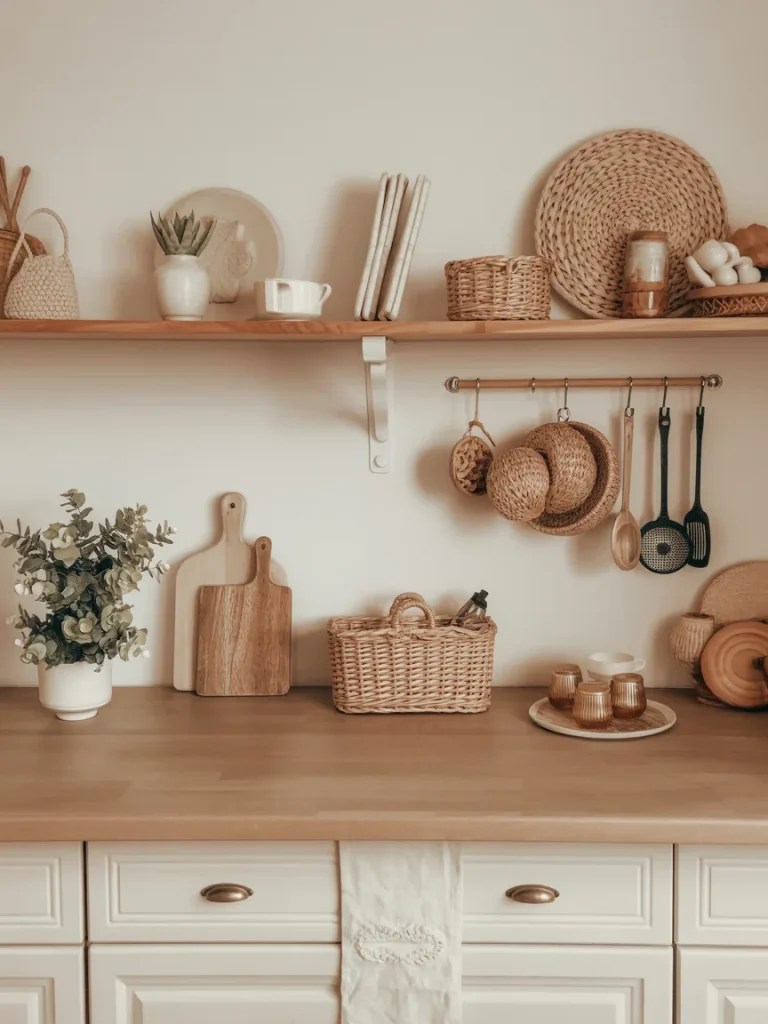
When it comes to décor, simplicity is key. Choose items that are both functional and meaningful. Handmade pottery, wooden bowls, woven trays, and terracotta planters enhance the rustic yet refined aesthetic. Instead of clutter, curate a few intentional pieces that tell a story — perhaps a vintage cutting board, a handcrafted mug, or a ceramic pitcher filled with fresh flowers.
This thoughtful approach keeps the space grounded and personal, allowing every item to add warmth and purpose. The result is a kitchen that feels calm, beautiful, and genuinely connected to you.
Bring Nature Home
An earthy kitchen is more than just a design choice — it’s a lifestyle statement that celebrates authenticity, comfort, and harmony with nature. By layering natural materials, embracing warm colors, and incorporating handcrafted details, you can transform your kitchen into a space that feels timeless and nourishing.You don’t need a full renovation to begin. Start small: repaint cabinets in a neutral hue, add wooden accents, or bring in a few plants. With every thoughtful addition, your kitchen will evolve into a peaceful retreat — a place where natural beauty and everyday living come together perfectly. By layering natural materials, embracing warm colors, and incorporating handcrafted details, you can create a timeless, grounded kitchen — one that blends effortlessly with farmhouse kitchen design ideas for a truly cozy home.

